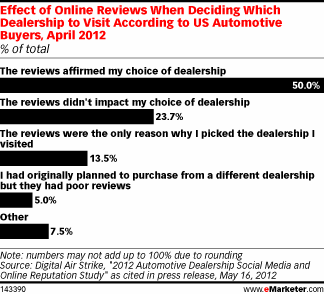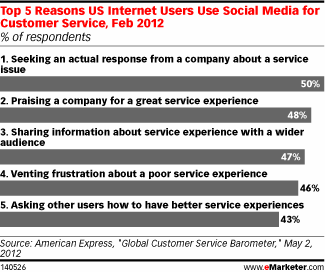The recent (2012) Search Engine Land’s Local Consumer Review Survey shows that since 2010, consumers are more likely to use the Internet to find local businesses, and they are doing it more often. They are also just as likely to turn to the internet, and trust online reviews as they are to ask for personal recommendations about local businesses.
- 85% of consumers surveyed have used the internet to find a local business in the past 12 months. This number is up from 79% in 2010.
- The majority of consumers surveyed use online reviews to make spending decisions. 27% of consumers are regularly reading online reviews, while another 49% are occasional readers.
- 65% of consumers (up from 58% in 2010) are reading between 2-10 reviews when researching local businesses.
- 72% of consumers trust online reviews as they do to personal recommendations.
- 58% of consumers trust a business which has positive online reviews (up from 55% in 2010)
- 52% of consumers are more likely to use a local business if they have positive reviews
- 28% of consumers cite location &/or price as main decision making factor (down from. 38% in 2010)
If you own a business, the statistics are clear, you need a strong online presence, you also need to monitor reviews and be proactive in following up with reviewers in a positive and constructive manner.
Reviews, even negative have always been opportunities to learn, to improve and create fans, do not ignore them, acknowledge reviewers, make things right if you can, pledge to improve, be transparent and truthful




